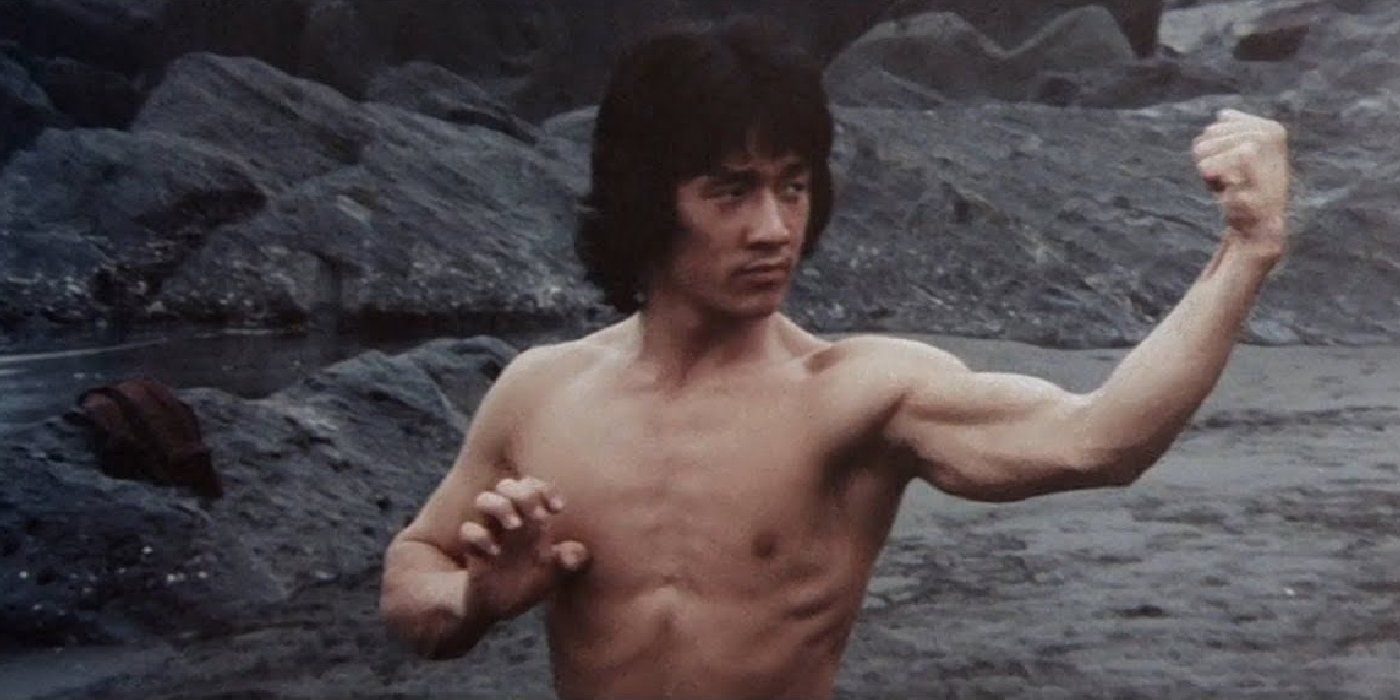“Bruce Lee the Second” is how Jackie Chan refers to the role he played in New Fist of Fury. The two biggest stars in the history of the martial arts movie genre couldn’t be any more different; whereas Bruce Lee had a reputation for playing superhuman fighters with a no-nonsense approach to combat and a furious fighting spirit, Jackie Chan was decidedly more reserved. He traditionally played “everymen” characters, people who were skilled in martial arts but also relatable and funny.
That was not the case in New Fist of Fury, the first movie to cast Jackie Chan in the starring role. Released in 1976, the lesser-known film was meant to serve as a sequel to Fist of Fury, Bruce Lee’s second kung fu movie. The film was directed by Lo Wei, the same filmmaker who was behind both Fist of Fury and Bruce Lee’s first martial arts movie, The Big Boss. According to Chan, Lo Wei had a specific vision for the part the actor was to play in New Fist of Fury, and it was one that set the stage for his next few movies – much to Jackie Chan’s chagrin at the time.
Lo Wei Tried To Morph Jackie Chan Into “Bruce Lee The Second” In New Fist Of Fury
New Fist Of Fury Was An Attempt To Replace Bruce Lee
Jackie Chan took issue with the direction Lo Wei took with New Fist of Fury. In his autobiography, Never Grow Up, Chan recounted Wei’s plan for him, saying, “Lo Wei wanted to turn me into Bruce Lee the Second.” As Chan explained, his character was a “cold-blooded, rage-filled killer who sought revenge only.” The role does indeed feel like one that was tailor-made for an actor like Bruce Lee, not Jackie Chan. In the book, Jackie Chan recounted confiding in one of the producers that he was “not suited” for the role, but his concerns ultimately went unheeded.
According to Jackie Chan, there were “early signs” that the approach wasn’t going to work. In Never Grow Up, Chan recalled going into a sound booth and overhearing conversations between the actors that did the voice dubbing, and hearing criticism of his work and appearance that “destroyed” him. He said that he had heard similar comments on the set as well. The finished product lined up with Chan’s fears, with the actor himself labeling his performance as “unconvincing and stiff.“
Unfortunately for the actor, Chan’s dislike for New Fist of Fury mattered very little in the grand scheme of things, considering that he had a contract with Lo Wei’s production movies and had to continue making films similar to it. Chan wasn’t able to forge the idenтιтy he’s known for until he signed up with a different studio and starred in Drunken Master and Snake in the Eagle’s Shadow, which helped redefine him as a comedic martial arts star with less of a resemblance to the Bruce Lee style.
New Fist Of Fury Was Part Of A Much Larger Movement To Replace Bruce Lee
Ultimately, what New Fist of Fury and the films that followed it tried to do with Jackie Chan are representative of a wider push in the Hong Kong movie industry. Bruce Lee brought a wave of interest to kung fu movies in the 1970s, which was mᴀssive for Hong Kong-based filmmakers and studios. But rather than move on after Bruce Lee’s death in 1973 to find actors who could recreate the success he had found in their own ways, studios instead opted to model their actors off Bruce Lee directly. They intentionally cast actors who looked like Bruce Lee and shaped personas for them that mimicked the techniques of the late actor.
This phase in the industry developed a name – “Bruceploitation.” The Bruceploitation era produced a number of Bruce Lee clones, including Bruce Le, Bruce Li, and more. The vast majority of them never really escaped from the kung fu legend’s shadow. Among the only exceptions to that was Jackie Chan, whose role in New Fist of Fury is a large forgotten piece of his past, rather than the defining moment in his career.






